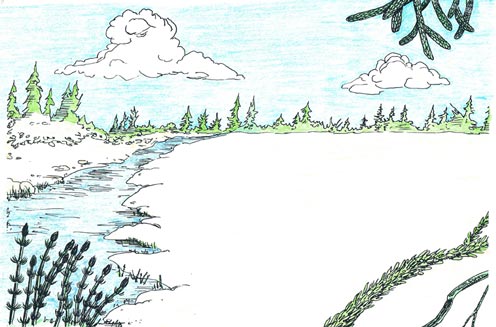Mesozoic CO2 Levels Much Higher than Today
A new study published by University of Utrecht researchers and published in the “Proceedings of the National Academy of Sciences” suggest that for much of the Mesozoic, carbon dioxide levels in the Earth’s atmosphere were much higher than they are today, even with global warming caused by greenhouse gases such as higher levels of CO2. Earlier studies had come to similar conclusions but this new research suggests that at the onset of the Triassic and into the Jurassic global CO2 levels could have been as much as five times their current levels.
Mesozoic
The new methodologies used to model the ancient CO2 levels could have implications for how climatologists plot changes in our environment as CO2 levels rise.
Scientists have known for some time that a large amount of volcanic activity results in more CO2 being released, but with previous analytical methods, it had been tricky to weigh up all the variables and to come up with an overall assessment of CO2 concentrations.
Lots of CO2 Around in the Mesozoic with the Dinosaurs
Picture credit: Everything Dinosaur
As the Mesozoic progressed so the super-continent of Pangaea began to break up into two smaller landmasses, essentially Laurasia in the Northern Hemisphere and Gondwana further south. The huge amount of plate movements led to extensive subduction and a great deal of volcanic activity. It was this volcanism that drove the release of CO2 into the Earth’s atmosphere, thus leading to a “greenhouse” world which was warm and humid and the dinosaurs thrived in.
CO2 Levels in the Atmosphere
Lead author of this new study, geoscientist Douwe van der Meer, (Utrecht University), explained that previous research had led to widely varying amounts of CO2 in the atmosphere, making such work of limited use when trying to model current climate change.
The Utrecht University research team used a state-of-the-art imaging technique called seismic tomography to reconstruct 250 million years of volcanic CO2 emissions. Seismic waves were analysed as they travelled through the rock layers that make up the Earth’s crust, this gave the team the opportunity to create a model of the structure of the Earth’s interior.
For dinosaur models, clothing and toys: Visit Everything Dinosaur.
Lead author, van der Meer stated:
“This method is comparable to CT scans used in hospitals to image inside bodies. With sufficient earthquake wave travel times, we can create a velocity model of the Earth. Faster regions are more dense, colder material plates that sank into the Earth as a result of subduction processes due to plate tectonics.”
Carbon dioxide is not the only greenhouse gas. Herbivorous dinosaurs may have played an indirect role in global warming by producing a lot of methane as they digested large amounts of plant matter.
To read an article about the role of sauropod dinosaurs in global warming: The Winds of Change – Methane Produced by Dinosaurs May Have Led to Global Warming.






Leave A Comment